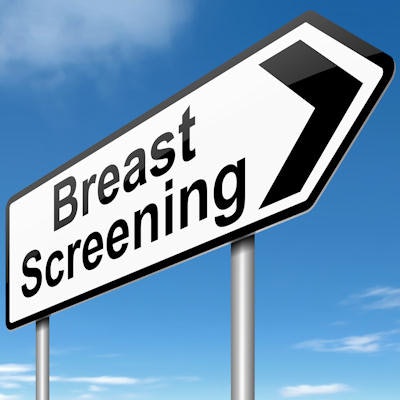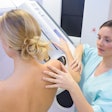
A risk-based breast cancer screening protocol for women younger than 50 could miss almost 60% of detectable cancers, compared with an age-based strategy, according to a presentation given at the recent RSNA 2016 meeting in Chicago.
Although some have suggested risk-based screening protocols for women younger than 50 as a way to increase the benefits of mammography and mitigate its harms, this approach hasn't been sufficiently evaluated in practice, said presenter Dr. Elizabeth Burnside of the University of Wisconsin. Burnside and colleagues conducted a retrospective study to investigate the impact a risk-based protocol could have on women between the ages of 40 and 49, compared with an age-based screening strategy.
 Dr. Elizabeth Burnside from the University of Wisconsin.
Dr. Elizabeth Burnside from the University of Wisconsin."Interest in risk-based screening has increased, especially for women between 40 and 49 and over 74, but it hasn't been tested with retrospective data," she told AuntMinnie.com. "We wanted to address that gap."
Actual vs. theoretical
In their actual clinical practice, Burnside and colleagues performed 72,200 consecutive screening mammograms on women ages 40 and older between January 2006 and December 2013. Among these, 349 cancers were identified: 257 (73.6%) were invasive and 97 (27.8%) were ductal carcinoma in situ. There were 4,816 recalls, for a recall rate of 8.2%, and 995 biopsy recommendations. The cancer detection rate was 4.58 per 1,000 women.
The researchers then took this pool of mammograms and assessed the two screening protocols, risk-based and age-based. For risk-based screening, they excluded women younger than 50 whose five-year risk was less than the average risk for a 50-year-old woman. For age-based screening, they modeled a protocol based on the American Cancer Society's guidelines, excluding all women 45 and younger. Burnside and colleagues then compared outcomes for the two approaches, tracking the number of cancers detected, the proportion of ductal carcinoma in situ (DCIS) compared to all cancers, recall rate, and the number of biopsies performed.
Age-based screening, starting at 45, detected more cancers than risk-based screening, although it did prompt more recalls and biopsies, the researchers found. But the difference in cancer detection between age-based and risk-based protocols was dramatic: In women younger than 50, age-based screening identified 36 cancers, more than twice the 15 cancers identified by the risk-based protocol. There was no statistically significant difference in the proportion of DCIS between the strategies, according to the group.
"The decision about whether to use risk-based screening isn't an easy one," Burnside said. "It will detect fewer cancers than an age-based protocol, but will save on biopsies and recalls. But it could also miss cancers that need to be identified, especially in younger women."
It's critical for radiology practices to evaluate their screening approach, both to determine how varied strategies may affect the program as a whole as well as subsets of women who may be excluded, Burnside told AuntMinnie.com.
"On paper, the benefits of risk-based screening might seem favorable at the program level, with women being subjected to fewer false positives," she said. "But when you look at the population that's impacted by this kind of strategy, the trade-offs and outcomes don't seem as favorable."



















